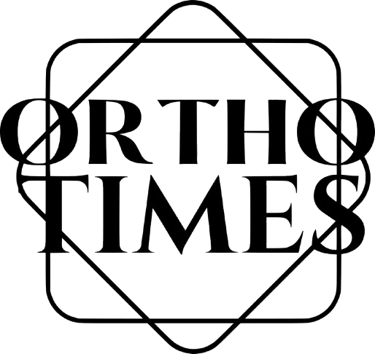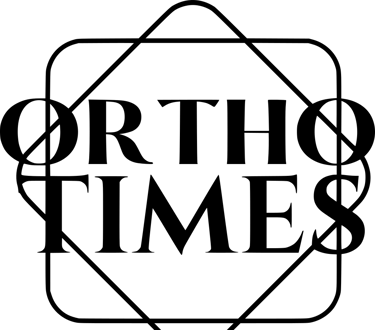F(Orth) - Expansion Notes
Blog post description.
F(ORTH) REVISION NOTES
4/27/20253 min read
→ What are your thoughts about the cause of this crossbite?
your answer will be based on the inclination of the posterior teeth , lingually tipped then it is dental , if they are upright or bucally tipped then it is skeletal
Whats the prevelance of crossbites ?
9-16% (foster & Hamilton)
→ How would you clinically assess whether the crossbite is due to skeletal or dental factors?
we can assess by putting the casts on a flat surface ,if we see which cusps are touching
Buccal cusps = Lingualy tipped = Dental in origin
Buccal cusps but not lingually tipped = upright = Skeletal
Lingual cusps = Buccally tipped = Skeletal in origin
Clinically
or by putting mirror on the occlusal plane and see which cusps touch
→ At this patient's age, what treatment options would you consider for expanding the arch?
In a question like this , you have to see is the patient an Adult or growing ? is the crossbite skeletal or dental ? bilateral or unilateral ? with shift or no ?
Young Patient - Skeletal- bilateral = RME
Young patient - dental - bilateral= Quad helix
Young patient - true unilateral - no FS = Aymmetric expansion (Quad helix)
Young patient - unilateral + FS = RME
Adult - Skeletal - Bilateral -No FS= Accept
Adult - Dental - Bilateral - No FS= Accept
Adult - true unilateral - No FS =
Adult - unilateral - functional shift - dental = Quad helix
Adult unilateral - functional shift -skeletal - no camouflagble( labially tipped) = MARPE or SARPE
→ How would you check for a functional shift ?
Extra orally by seeing if theres any chin deviation
Intra orally by checking for midline shifts
functionally by asking the patient to open and close his mouth when the mandible in his most retruded position and recording the occlusion at first contact and at maximum intercuspation there should be no deviation from first contact to maximum intercuspation
→Will you use banded or bonded RME and whats the difference ?
if the patient is a high angle then i would use bonded to get and advantage of the bite plane effect
Also less buccal tipping is seen with bonded than banded RME (Huseyin et al)
→ If you plan to use a Rapid Maxillary Expander (RME), whats your design ?
Bands on the 4s and 6s connected together with a lingual bar on each side , and the right and left part of the design will be connected with an expansion screw that is activated everyday
→ If you plan to use a Quad helix, whats your design ?
Its a W shaped device consists of 4 helixes , 2 anterior and 2 posterior and arms that extend to the first premolar (or the last tooth in a crossbite)
→ How would you instruct the patient to use the RME ?
I will ask him to open the screw twice per day for 2 weeks (depends on how much expansion you need 2 turns per day will expand the arch by 0.4mm)
→ What side effects might occur during expansion?
Occurence of Midline Diastema
Buccal tipping of the buccal segment
Shallowing of the bite
increase in the VD
→ How will you overcome this problem ?
The midline diastema is going to close on its own eventually due to transeptal fibers
When apply lingual crown torque on the buccal segment whwen reaching a rectangular archwire the buccal tipping is goin to be fixed and so is the shallowing of the bite and increase in VD
→ How would you monitor the success of the expansion — clinically and radiographically?
Clinically as we mentioned by observing a midline diastema that happens usulally in the first week
And radiographically by taking an anterior occlusal radiograph to check for opening of the suture
→ At what stage during treatment would you stop activating the expander? How would you decide this?
until i have over expanded enough that the palatal cusps occlude with sloped of the buccal cusps of the lower buccal segment to intercept for relapse
→ How much relapse are you expecting ?
40% (Herold)
→ What complications should you warn the parents about before starting RME?
Pain
dizziness
→ What retention protocol would you follow after completing expansion? Why is it necessary?
I would remove the appliance and use a TPA and wait for 3-6 months for bone to fill in the area were the mid palatine suture has opened and because of the high relapse rate of expansion(if RME was used)
If quad helix was used for dental expansion in adults were the suture did not open i would use a TPA to retain my expansion and continue with my fixed appliance treatment
→ If you see poor expansion results after 2 weeks of activation, what could be the causes?
Could be a compliance problem
or suture has closed
poor design
→ How would you manage asymmetric expansion if the crossbite was only on one side?
I could use Asymmetric mechanincs using quad helix , like using a longer arm in the side i dont want to expand or stablizing this side by a miniscrew , or using an acrylic that rests on the palate instead of a wire that rests on the teeth.
→ In which cases would MARPE be a better option than RME?
in adults needing skeletal expanison
→ does RME effect the mid palatine suture only or there other suture affected by RME ?
No actually RME disarticulates all the cirum maxilary sutures
What is usually the cause of dental crossbites ?
Genetic , environmental like habits (Mouth breathing or digit sucking )
What is usually the cause of skeletal crossbites ?
Genetic



